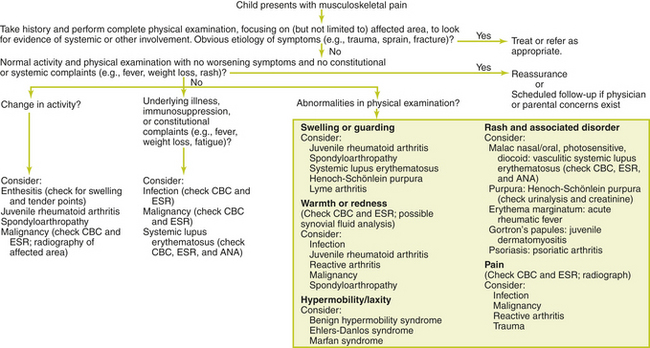Chapter 31 MUSCULOSKELETAL PAIN
General Discussion
Musculoskeletal pain during childhood can be difficult for children to characterize. Most causes of acute musculoskeletal pain in children are easy to identify, but the cause of chronic musculoskeletal pain or pain that has associated systemic symptoms can be more difficult to diagnose (see Figure 31-1). Nonrheumatic causes of musculoskeletal pain are much more common than rheumatic causes.




